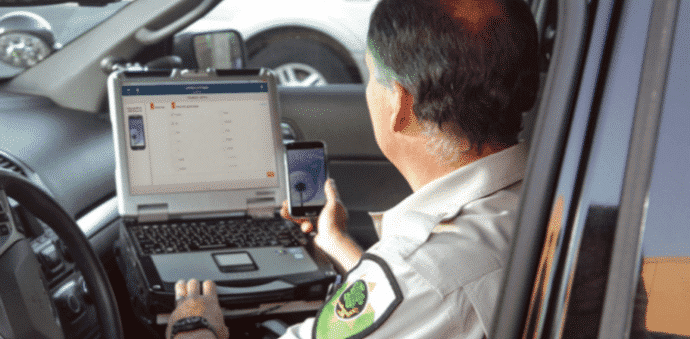‘Textalyzers’ will help NYPD to determine if drivers were distracted by using their phones before an accident
If a proposed law passes the state legislature in New York, then drivers might soon be subject to on-the-spot analysis of their mobile phones to determine whether they were distracted by their devices in the run-up to accidents.
This new device called a “textalyzer” will help police determine whether drivers involved in the crash were being unlawfully distracted by their mobile phone.
New York Senator Terrence Murphy and Assembly Assistant Speaker Felix Ortiz have partnered with Distracted Operators Risk Casualties (DORC), an awareness organization, to propose a bill that would allow authorities to examine phones at an accident site.
Under legislation proposed in New York, drivers involved in accidents would have to submit their phone to roadside testing from a textalyzer to conclude whether the driver was using a phone ahead of a crash. The law enforcement officers would be able to see when a phone had been used but not conversations, phone numbers, photos or any information on the device.
“I have often heard there is no such thing as a breathalyzer for distracted driving — so we created one,” Ben Lieberman, co-founder of DORC, said in a statement. “Respecting drivers’ personal privacy, however, is also important, and we are taking meticulous steps to not violate those rights.”
Failure or refusal to hand over a device would result in the “revocation of the driver’s license or permit.” Police officers would also be able to assume that the driver was using their phone at the time of the incident. If the driver does refuse, a warrant could be obtained by the police.
The roadside technology is being developed by Cellebrite, an Israeli firm specialising in mobile forensics, who is also believed to have assisted the FBI in cracking the San Bernardino iPhone last month. The company already has working technology that would be able to examine a phone at the side of the road.
“With basic mobile forensic knowledge and minimal training, field professionals can perform mobile device examinations, in real time, as part of their daily operations,” the company’s website claims.
The legislation was prompted, in part, by the death of Ben Lieberman’s son, Evan, who was killed by a distracted driver in New York in 2011. Lieberman, who founded DORC in the wake of his son Evan’s death, said that drivers need to be held accountable to keep people from dying.
“Distracted driving should be taken as seriously as drunk driving,” Lieberman said. “It’s time to recognize that distracted driving is a similar impairment, and should be dealt with in a similar fashion.”
Drivers who text behind the wheel are 23 times as likely to crash, according to the National Highway Traffic Safety Administration.
After Evan’s death, the other driver’s phone sat in a junkyard for weeks, and was never looked through by the police. Lieberman finally had his attorney subpoena the records for a civil suit.
The driver of the car that killed Evan “was texting throughout the drive leading up to the crash,” said Lieberman.
Lieberman’s family settled the civil case out of court for an undisclosed sum.
Deborah Becker, DORC’s co-founder, said in a statement, “According to the National Safety Council, car crash statistics spiked significantly this year and that is the first increase after 10 years of steady decline. Since drunk driving is down and today’s cars are built better than ever, the addition of mobile devices in our lives becomes the most likely reason for this sudden increase.”
Currently, before the New York Senate Transportation Committee, the legislation makes specific note of this provision for privacy, stating that “no such electronic scan shall include the content or origin of any communication, game conducted, image or electronic data viewed on a mobile telephone or a portable electronic device.” However, if the legislation receives a green signal, it will change the law so that drivers give implied consensus for police to find out whether they were using “a mobile telephone or portable electronic device at or near the time of the accident or collision.”
